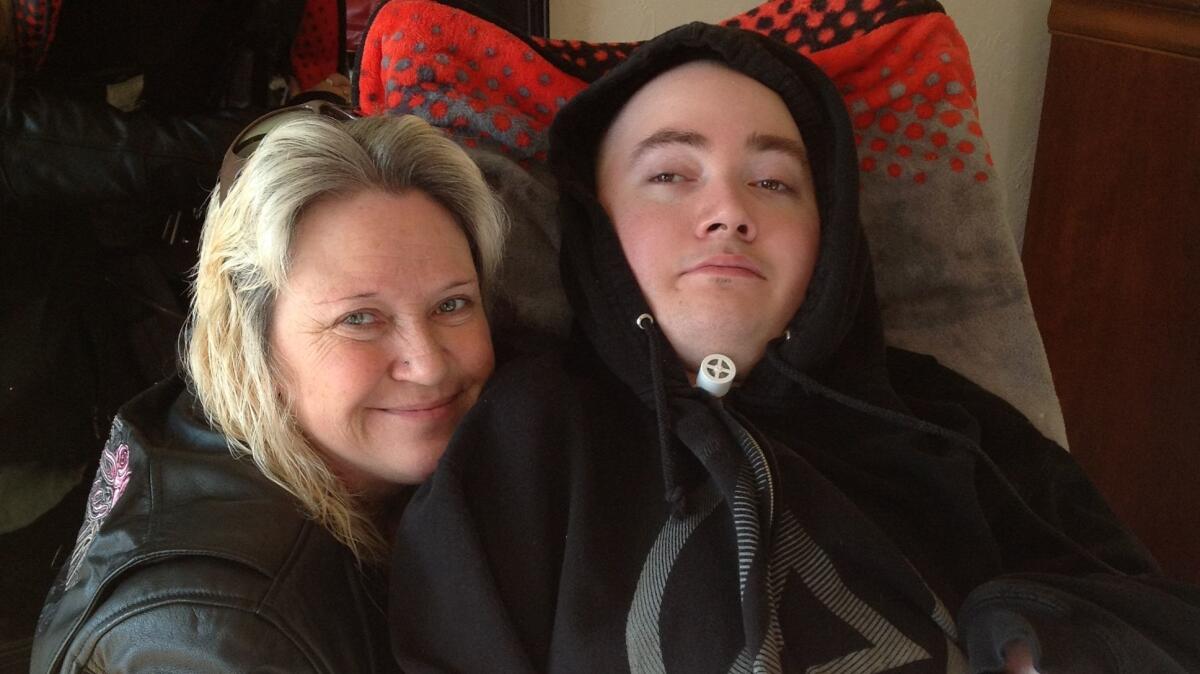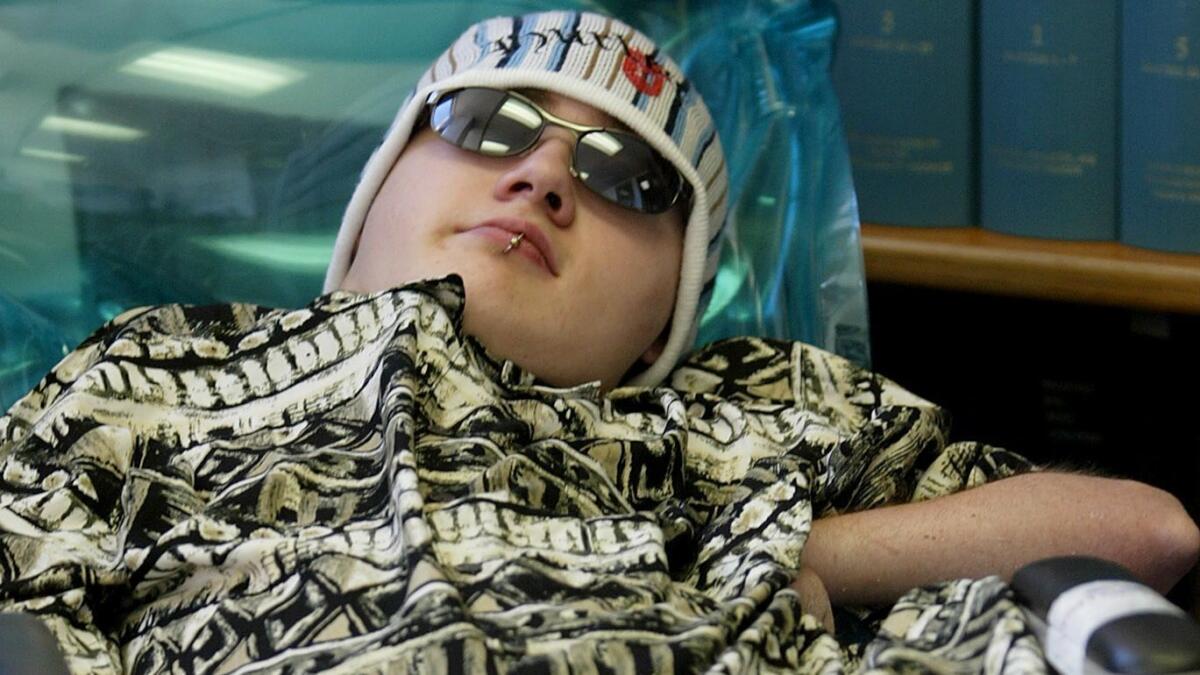Brandon Maxfield, shooting victim who took down California gunmaker, dies at 29

Brandon Maxfield was all of 7 when he was shot in the face, the bullet tearing through his neck and smashing his spine.
That he lived was remarkable. That he had the strength and will to take on the manufacturer of the weapon that had left him a quadriplegic was the stuff of a movie script.
Confined to a wheelchair, Maxfield and his attorney went after the maker of the low-cost and cheaply made .380-caliber handgun that a family friend accidentally fired, winning a $24-million judgment and driving the gun maker out of business.
He saw little of the money, but over the years he spent battling Bryco Arms and its owner, he cemented himself as a hero among those fighting the proliferation of easy-to-get, cheap-to-buy guns.
“He did something that no one else could do. He shut down a gun manufacturer that the country is better off without,” said Mike Harkins, a family friend and author of “Move to Fire,” a book about Maxfield’s legal battle with Bryco.
On Sunday, at the age of 29, he died at his home in Willits, Calif., of complications from his paralysis, a family friend said.

The gun had belonged to Maxfield’s parents, who kept it in a drawer. When a 12-year-old relative found it, a 20-year-old babysitter took it away and tried to unload the weapon. The gun discharged, wounding Maxfield so gravely that he was not expected to survive.
The ease with which the gun seemed to fire became a cornerstone of the fight against Bryco, then a dominating player in the manufacturing of cheap handguns known as Saturday night specials. In court, Maxfield’s attorney, Richard Ruggieri, argued that the gun had a notorious flaw: When the safety was on and the slide was pulled back to extract or check on a bullet, the gun would jam.
Rather than spend money repairing the flaw, Ruggieri said Bryco took the cheap way out, and rewrote the gun’s instructions, advising owners to remove the safety before pulling back the slide. Ruggieri said the newly written instructions made as such sense as advising drivers to remove their seat belts just before a crash.
Although a jury in Oakland awarded Maxfield millions, Bruce Jennings — who’d dropped his liability insurance — closed Bryco, declared bankruptcy and moved to Florida, where he bought a 3,000-square-foot home with its own airplane hangar. The house was protected from creditors in a bankruptcy. Jennings is now serving a 10-year prison sentence for distributing child pornography. Maxfield, who’d formed a nonprofit organization called Brandon’s Arms to aid in his fight, tried to buy what remained of Bryco — chiefly guns and gun parts — and have it melted in a giant blob that could be displayed as artwork. But he was outbid by a former Bryco employee who renamed the company and moved it to Nevada.
Harkins said that Maxfield once remarked that his own fate was like a contestant who tripped over the final winner-take-all question in a game of “Who Wants to Be a Millionaire.”
He did, however, manage to get 20,000 of the guns destroyed, weapons that had been assembled after Jennings filed bankruptcy. It was a bold move. He could have netted as much as $3 million had he allowed the weapons to be sold, Ruggieri said.
“I was proud of him,” the attorney said. “He channeled all of his energy into his belief that what happened to him should never happen to anyone else.”
For someone who’d largely been robbed of the ability to move, Maxfield was remarkably active.
With the money he received from insurance companies, he bought both a home and a customized van and traveled to the Northwest and the East Coast. He took a Hawaiian cruise. He went to Las Vegas. He attended concerts. His diversions were typical: video games, the Internet, the World Wrestling Federation and music, particularly Linkin Park. He’d even gotten married, albeit briefly, duly noted with a tattoo on his chest reading, “Don’t Even Try It.”
Harkins said he saw Maxfield a week ago and noticed that — while still cheery and engaged — his health had receded. His lungs were in poor shape, he had problem with circulation — all issues associated with his injury.
But he’d long been aware of his limits.
“My time is going to be up before most people,” he told The Times in a 2013 interview. “And I’m OK with that.”
Harkins said he always been impressed with Maxfield’s innate ability to handle the spotlight that came with taking on Bryco Arms.
“Self-pride without ego,” Harkins said. “To sue the gun maker, to stay with the suit, all while being the face of an innocent victim — he looked at that as any importance job. But he was never boastful.”
Twitter: @StephenMarble
More to Read
Start your day right
Sign up for Essential California for the L.A. Times biggest news, features and recommendations in your inbox six days a week.
You may occasionally receive promotional content from the Los Angeles Times.





